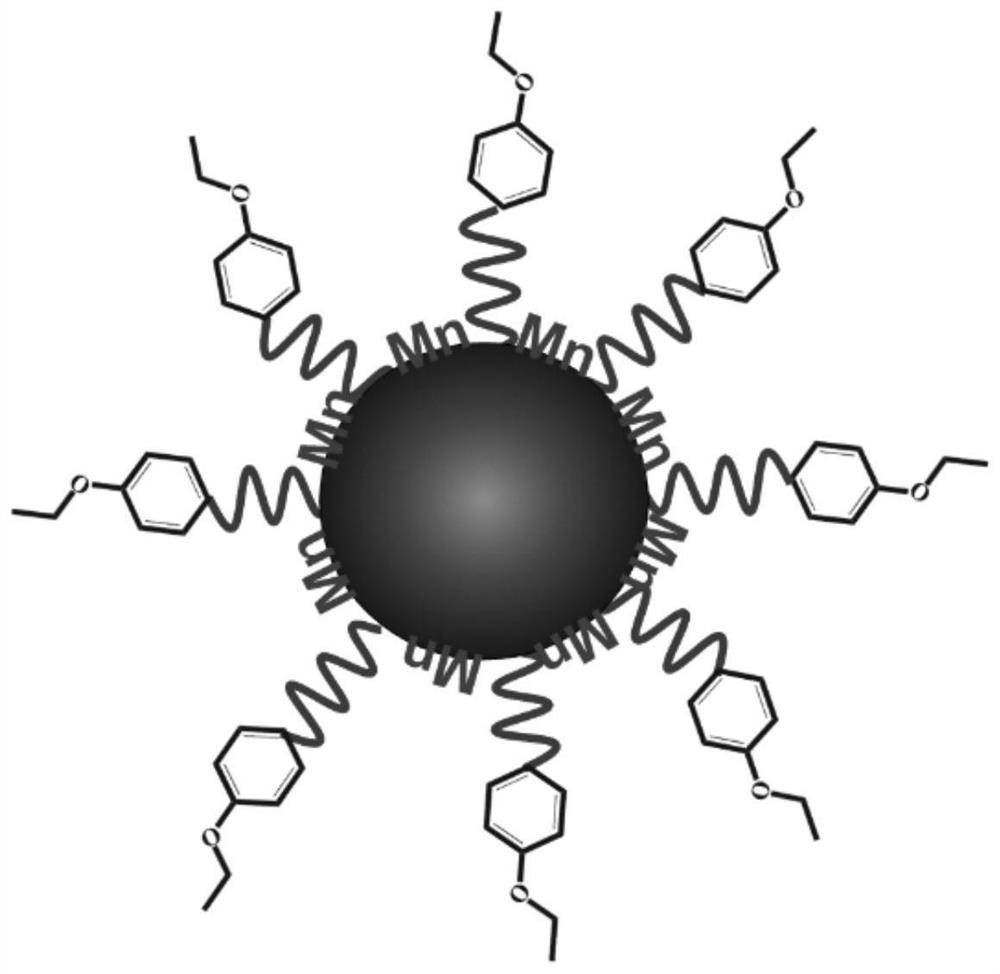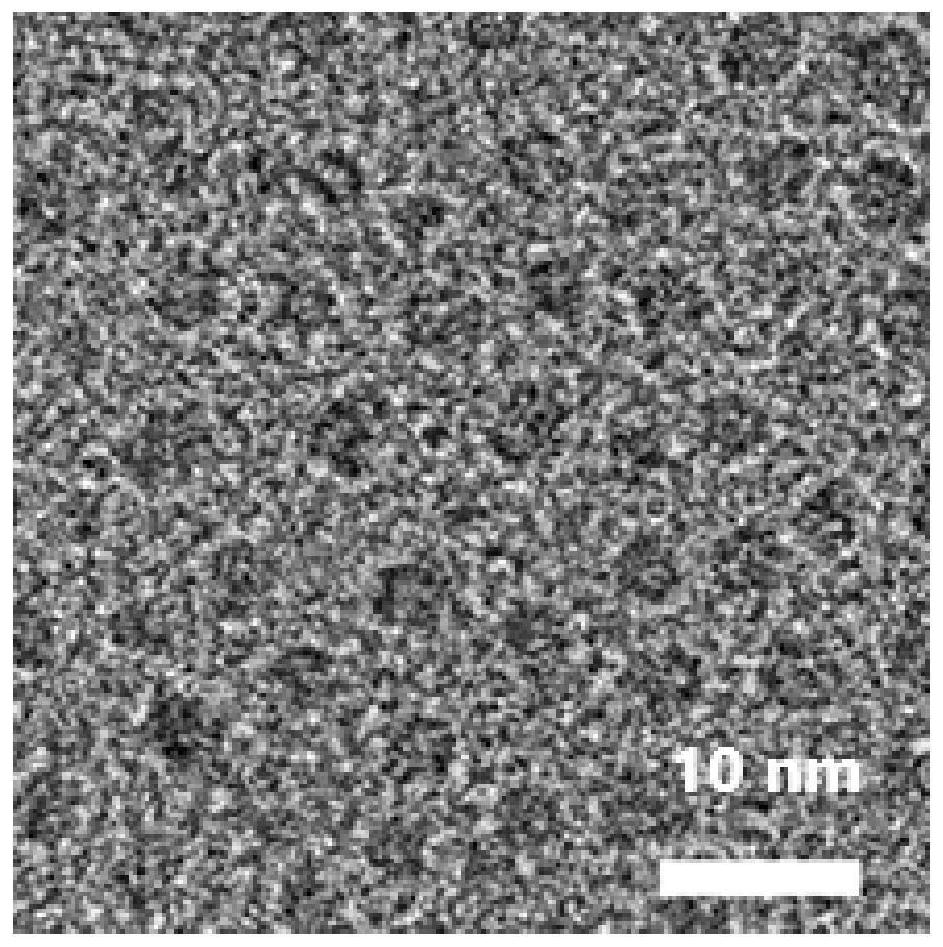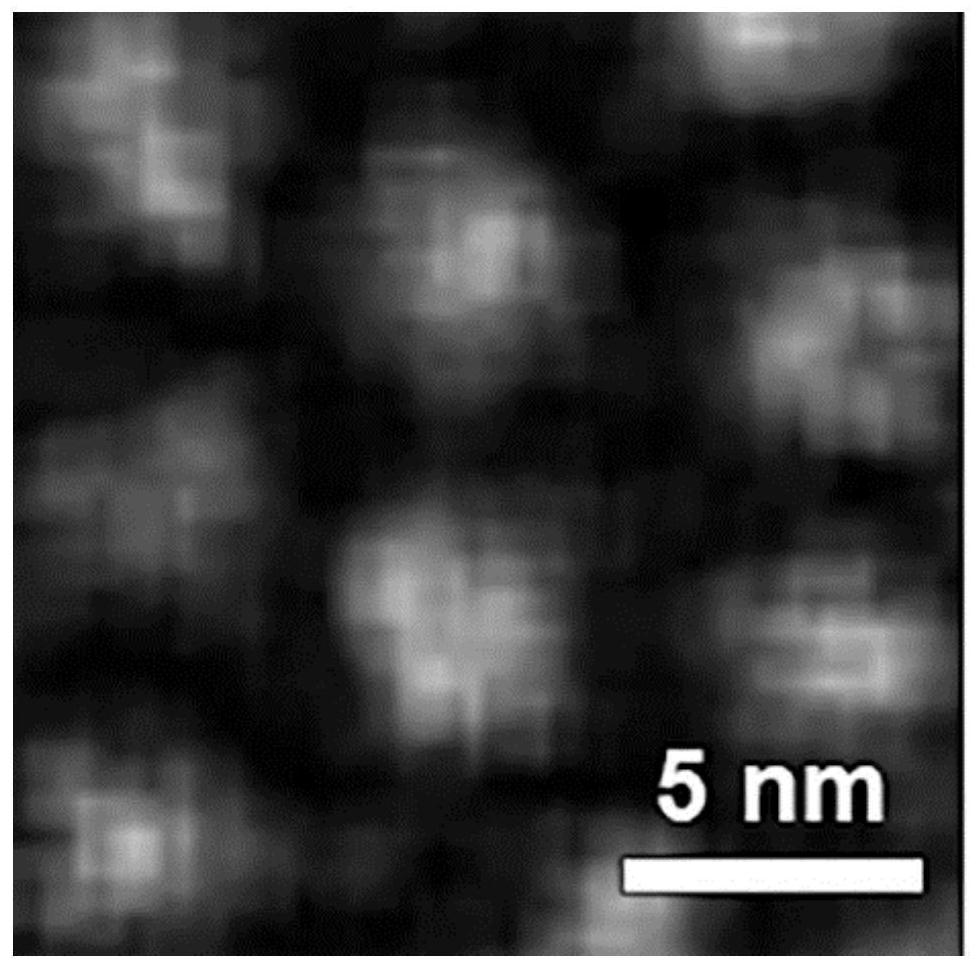Composite ferrite nanoparticles for synergistically enhancing liver specificity as well as preparation method and application thereof
A nanoparticle and ferrite technology, applied in nanotechnology, nanotechnology, nanomagnetism, etc. for materials and surface science, can solve problems such as fibrosis, human body risk, and T2 imaging artifacts
- Summary
- Abstract
- Description
- Claims
- Application Information
AI Technical Summary
Problems solved by technology
Method used
Image
Examples
Embodiment 1
[0023] A method for preparing composite ferrite nanoparticles that synergistically enhances liver specificity: 20 mg of nano manganese ferrite particles and 80 mg of dopamine-polyethylene glycol (Mw=1000)-ethoxybenzene molecules Disperse in 12ml of tetrahydrofuran solution, stir fully under argon atmosphere to obtain a uniform mixture, wherein the molar ratio of manganese to iron is 0.52; heat the mixture to 50°C and keep it for 5h for reaction, after the reaction is completed, naturally cool the mixture to room temperature; 10mL of ether was added to the mixed solution, stirred, precipitation occurred, and then centrifuged, and the product obtained by centrifuged was dissolved in deionized water to obtain composite ferrite nanoparticles containing manganese ions and ethoxyphenyl groups. The result Analysis showed a molar percentage of ethoxyphenyl to manganese ions of 46%.
Embodiment 2
[0025] A method for preparing composite ferrite nanoparticles that synergistically enhances liver specificity: disperse 20 mg of nano-manganese ferrite particles and 50 mg of 3-(4-ethoxyphenyl) propionic acid in 10 ml of tetrahydrofuran In the solution, stir fully under an argon atmosphere to obtain a homogeneous mixture, wherein the molar ratio of manganese to iron is 0.61; heat the mixture to 60°C for 4 hours, and cool the mixture to room temperature naturally after the reaction; take 10mL of ether and add it to the mixture In the process, precipitation occurs and then centrifuged, and the product obtained by centrifugation is dissolved in deionized water to obtain composite ferrite nanoparticles containing manganese ions and ethoxyphenyl groups. The analysis results show that ethoxyphenyl and manganese The molar percentage of ions is 39%.
Embodiment 3
[0027] A method for preparing composite ferrite nanoparticles that synergistically enhances liver specificity: disperse 20 mg of nano-manganese ferrite particles and 120 mg of dopamine-dextran (Mw=2000)-ethoxybenzene molecules in 12ml In tetrahydrofuran solution, stir fully under argon atmosphere to obtain a homogeneous mixture, in which the molar ratio of manganese to iron is 0.52; heat the mixture to 60°C for 5h, and cool the mixture to room temperature naturally after the reaction; take 10mL of acetone and add it to the mixture solution, precipitated and then centrifuged, and the centrifuged product was dissolved in deionized water to obtain composite ferrite nanoparticles containing manganese ions and ethoxyphenyl groups. The analysis results showed that ethoxyphenyl and The molar percentage of manganese ions is 28%.
[0028] A series of characterizations were carried out on the composite ferrite nanoparticles prepared in Example 1. Specifically, the composite ferrite nano...
PUM
| Property | Measurement | Unit |
|---|---|---|
| particle diameter | aaaaa | aaaaa |
| particle diameter | aaaaa | aaaaa |
| size | aaaaa | aaaaa |
Abstract
Description
Claims
Application Information
 Login to View More
Login to View More - R&D
- Intellectual Property
- Life Sciences
- Materials
- Tech Scout
- Unparalleled Data Quality
- Higher Quality Content
- 60% Fewer Hallucinations
Browse by: Latest US Patents, China's latest patents, Technical Efficacy Thesaurus, Application Domain, Technology Topic, Popular Technical Reports.
© 2025 PatSnap. All rights reserved.Legal|Privacy policy|Modern Slavery Act Transparency Statement|Sitemap|About US| Contact US: help@patsnap.com



